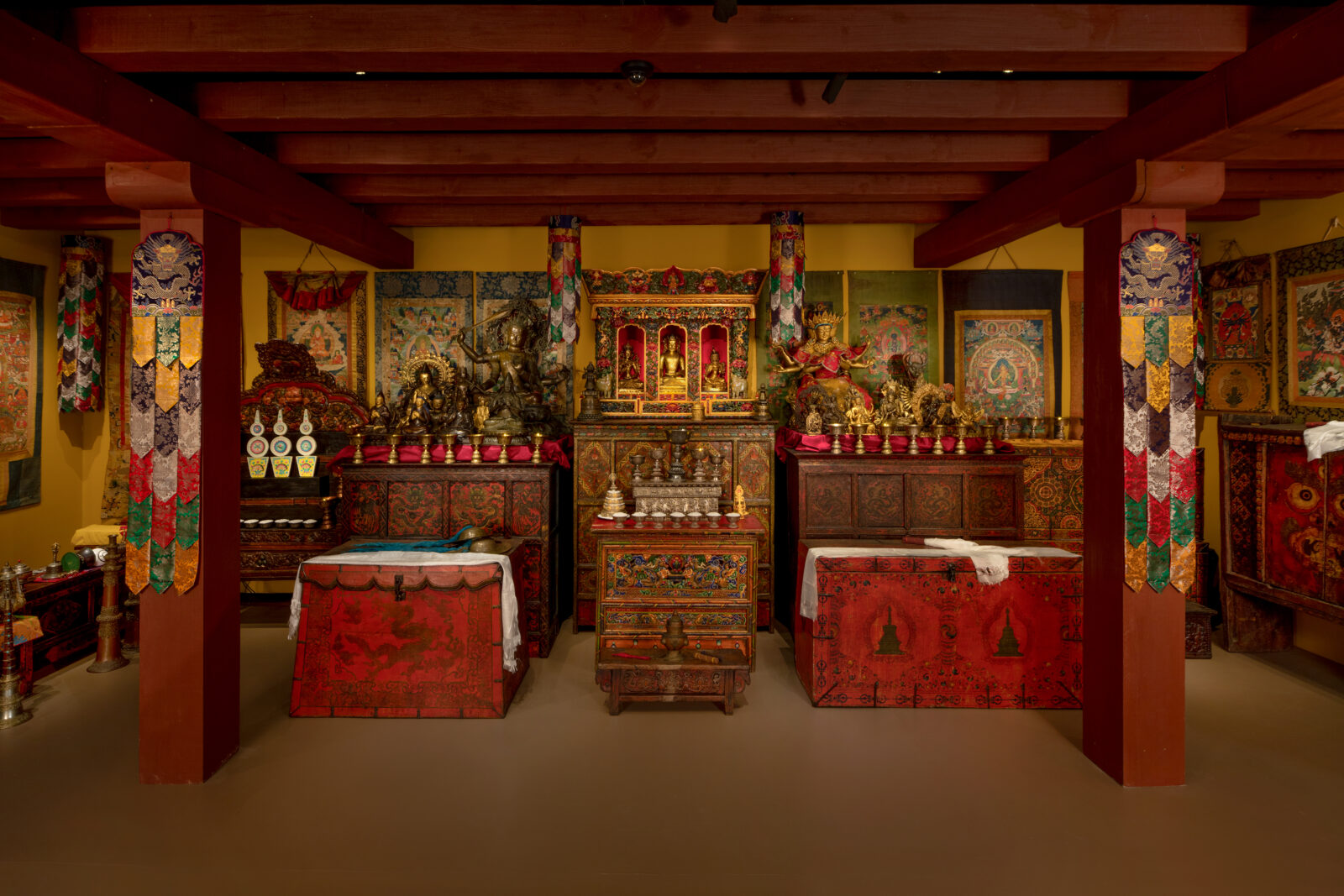Tibet
12th century
This relaxed posture is commonly associated with regal leisure.
Tibet
12th century
Avalokiteshvara, the bodhisattva who personifies the compassion of all the buddhas, is the most venerated deity in Tibetan Buddhist traditions. Seated in the posture of royal ease, with one leg pendant and one folded, he holds the stem of a lotus bud. The inlaid eyes and tuft of hair between them (urna), subtle smile, exquisite details of the knotted belt, incised lower garment (dhoti), and modeling of the body testify to the mastery of the sculptor, who closely followed Indian conventions. Older sculptures such as this were treasured by Tibetans and were often kept as heirlooms.

Photo by Dave de Armas
A state of “waking up” from illusion and seeing the true nature of reality. Buddha Shakyamuni attained enlightenment while meditating under the bodhi tree. Buddhist teaching explains that the accumulation of merit and wisdom are essential for achieving enlightenment, also known as awakening.
The cultivation of a strong aspiration to help sentient beings overcome suffering. In Buddhist Mahayana teaching, compassion is the seed for attaining full enlightenment.
The central goal of Buddhism is the liberation of all beings from suffering and the cycle of life, death, and rebirth, known as samsara, through applying the teachings of the Buddha.
Beings who aspire to become fully awakened like the Buddha and are dedicated to helping others on the path to enlightenment.
Today, Tibetans primarily inhabit the Tibetan Plateau, situated between the Himalayan mountain range and the Indian subcontinent to the west, Chinese cultural regions to the east, and Mongolian cultural regions to the northeast. During the 7th to 9th century, Tibetan rulers expanded their empire across Central Asia, and established Buddhism as the state religion.
Get the latest news and stories from the Rubin, plus occasional information on how to support our work.